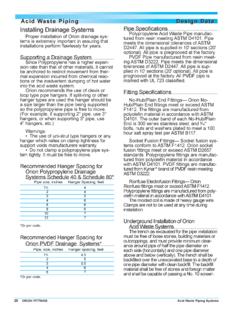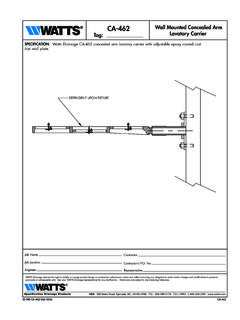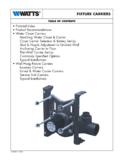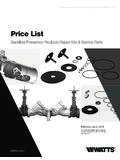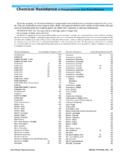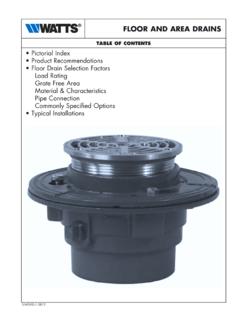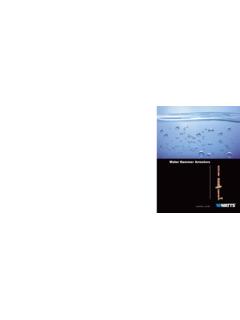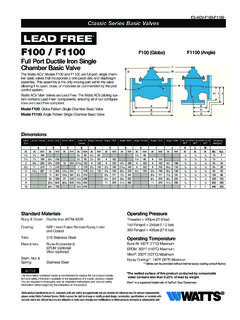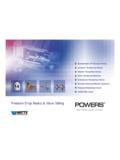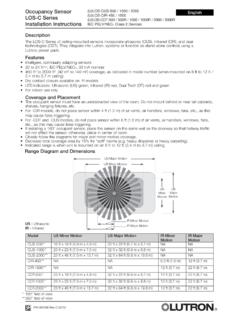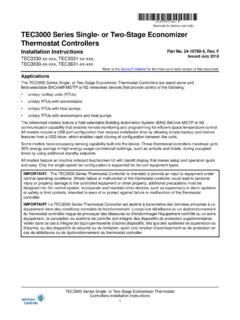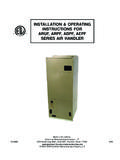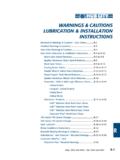Transcription of Installation Instructions - Watts Water
1 957 OSYRP/IS-957/957 RPDA 957 OSYI nstallation, Maintenance, & RepairSeries 957, 957 RPDA, LF957 RPDAR educed Pressure Zone AssembliesReduced Pressure Detector AssembliesSizes: 21 2" 10" (65 250mm)NOTICEFor Australia and New Zealand: Pipeline strainers should be installed between the upstream shutoff valve and the inlet of the backflow 's important that this device be tested periodically in compli-ance with local codes, but at least once per year or more as service conditions warrant. If installed on a fire sprinkler system, all mechanical checks, such as alarm checks and backflow preventers, should be flow tested and inspected internally in ac-cordance with NFPA 13 and NFPA field testing procedure, refer to Watts Installation sheets IS-TK-DP/DL, IS-TK-9A, IS-TK-99E and IS-TK-99D found on other repair kits and service parts, refer to our Backflow Pre-vention Products Repair Kits & Service Parts price list PL-RP-BPD found on technical assistance, contact your local Watts building or plumbing codes may require modifi cations to the information provided.
2 You are required to consult the local building and plumbing codes prior to Installation . If this informa-tion is not consistent with local building or plumbing codes, the local codes should be for Periodic Inspection/Maintenance: This product must be tested periodically in compliance with local codes, but at least once per year or more as service conditions warrant. Corrosive Water conditions, and/or unauthorized adjustments or repair could render the product ineffective for the service in-tended. Regular checking and cleaning of the product s internal components helps assure maximum life and proper product function.
3 WARNING!Read this Manual BEFORE using this to read and follow all safety and use information can result in death, serious personal injury, property damage, or damage to the this Manual for future Most field problems occur because dirt and debris are pres-ent in the system at the time of Installation and becomes trapped in the #1 check. The system should be flushed before the backflow valve is installed. If the system is not flushed until after the backflow valve is installed, remove both check modules from the valve and open the inlet shutoff to allow Water to flow for a sufficient time to flush debris from the Water line.
4 If debris in the Water system continues to cause fouling, a strainer can be installed upstream of the backflow Watts Series 957, 957 RPDA and LF957 RPDA may be in-stalled in either horizontal, N pattern, or Z pattern position as long as the backflow assembly is installed in accordance with the direction of the flow arrow on the assembly and the local Water authority approves the Installation . 3. The assembly should be installed with adequate clearance around the valve to allow for inspection, testing and servic-ing. 12" (305mm) should be the minimum clearance between the lower portion of the assembly and the floor or grade.
5 The valve should be protected from Installing a backflow preventer in a pit or vault is not Normal discharge and nuisance spitting are accommodated by the use of a Watts air gap fitting and a fabricated indirect waste line. Floor drains of the same size must be provided in case of excessive The 957, 957 RPDA and LF957 RPDA backflow preventer should be tested by a certified tester at the time of body should not be InstructionsSeries 957, 957 RPDA, LF957 RPDA2 WARNING!Prior to servicing any Watts valve, it is mandatory to shut down the Water system by closing both the inlet and outlet shutoff valves.
6 After shutoff valves are closed, open test cock #2, #3 and #4 to relieve pressure within the backflow After #3 test cock has been opened to relieve pressure, remove #3 test cock from housing. (Figure A)2. Insert a #3 screwdriver through the hole on the top of the cover sleeve and using both hands rotate the cover sleeve approximately 1 4-turn clockwise and 1 4-turn counter-clock-wise to break the sleeve O-ring seals. Using the screwdriver, slowly slide the cover sleeve to the downstream side of the housing. (Figure B)3. Remove the stainless steel check retainer from the housing. (Figure B)4. Remove the #1 check module (Figure C) by inserting two flat blade screwdrivers into the slots on either side of the check module and gently pry the check module toward the open Remove #2 check module with the same Instructions as in #4 above.
7 For servicing 6" (150mm) checks see 8" 10" (200 250mm) Instructions on p. To clean or inspect either check module, insert a #3 screw-driver through the downstream side of the check module as shown in Figure D and E. When the screwdriver is in place, remove the E-clip (Figure F) and pin connecting the structural members and the check clapper will open with no Thoroughly clean the seating area. The sealing disc may be removed, if necessary, by removing the screws connect-ing the keeper plate to the clapper. The sealing disc may be reversed and reinstalled if the elastomer is cut or Wash check module and O-ring and inspect for any damage.
8 If damaged, reinstall new After thorough cleaning, lubricate O-ring w/FDA approved lu-bricant, replace pin and E-clip in structural members, remove screw driver and reinstall check modules and assemble hous-ing in reverse order of these InstructionsSeries 957, 957 RPDA, LF957 RPDA21 2" 6" (65 150mm)Relief Valve Discharge Rates 21 2" 10" (65 - 250mm) 957, 957 RPDA and LF957 RPDA lpm gpm 1330 350 1140 300 950 250 760 200 570 150 380 100 190 50 0 00 20 40 60 80 psi0 138 276 413 551 kPaRate of FlowPressureHorizontal InstallationN PatternZ PatternFigure AFigure BFigure CFigure DFigure EFigure F#2 Check DiagramsFigure DFigure EFigure F#1 Check DiagramsInstallation InstructionsSeries 957, 957 RPDA, LF957 RPDA30 20 40 60 80 psi0 138 276 413 551 kPa3 WARNING!
9 Prior to servicing the relief valve, it is mandatory to shut down Water system by closing both the inlet and outlet shutoff valves and relieving pressure within the assembly by opening the #2, #3 and #4 test NOT REMOVE SPIDER BUSHING FOR SERVICING1. Disconnect the hose from the bottom cover plate to the relief An O-ring seals the relief valve body to the main housing. It is not necessary to tighten the connection beyond firm hand tightening. The relief valve should be able to be removed by unscrewing the relief valve from the Remove the cover plate of the relief valve by removing the four connecting Remove the rubber diaphragm from the relief valve.
10 Be aware of how the diaphragm is configured so that it can be reinstalled in the same manner. The hard rubber tab in the diaphragm fits into a similar socket in the head of the piston. (Figure 1)5. Hold the relief valve in both hands with the threaded end up and both thumbs on the head of the piston. Push up on the piston until the piston shaft with the attached E-clip is exposed. Remove the E-clip (Figure 2)6. Remove the piston and spring from the relief valve hous-ing and thoroughly clean all parts including the diaphragm. Inspect all rubber parts for damage and if damaged, replace them with new Reassemble the relief valve in the reverse order that it was 1 Figure 2 Material Tool Requirements: #3 Phillips screwdriver or 5/16" diameter rod, length sufficient to span diameter of check, see Figures A and B.
